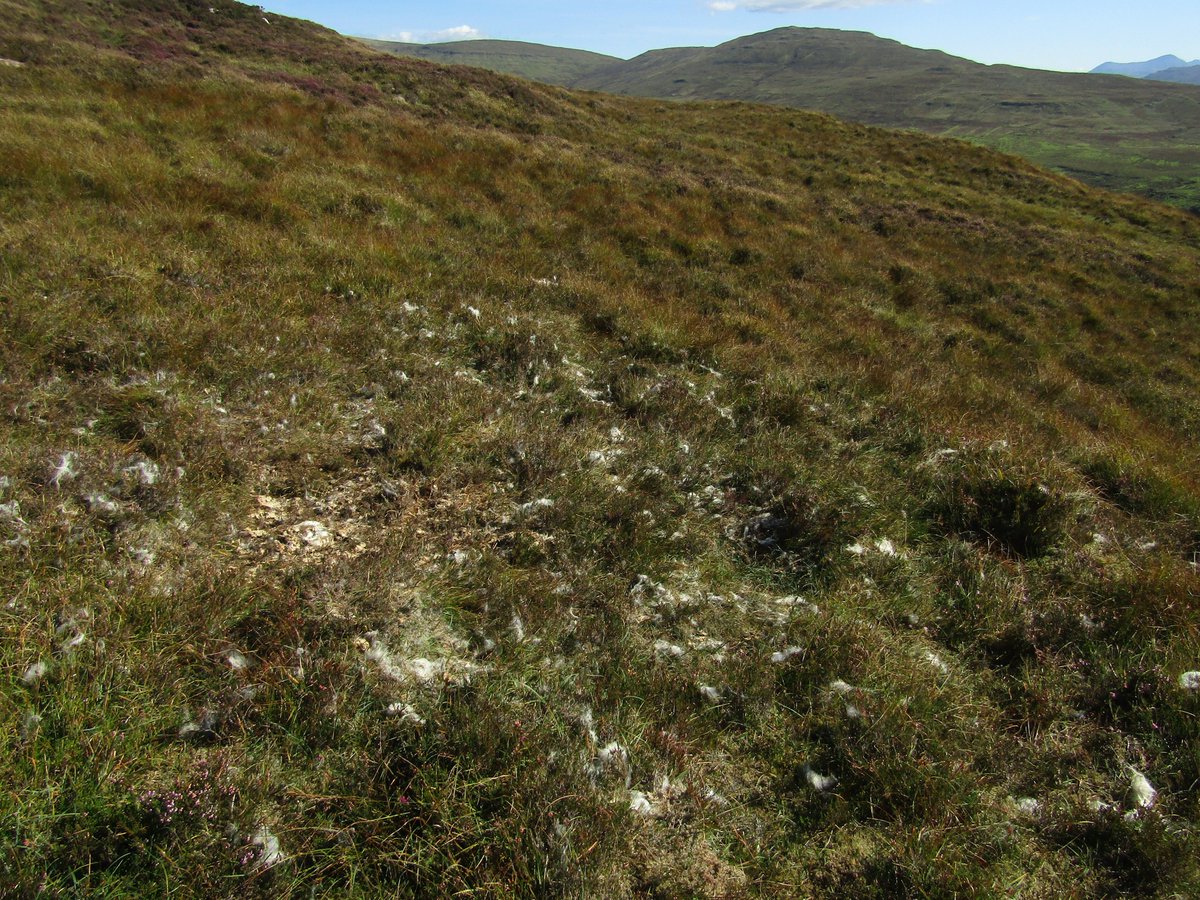Fieldwork- I’ll cover some of my work into the causes of unexplained lamb losses. During 2021 and 2022 I followed lamb health issues on two farms, a croft and @SRUC’s Auchtertyre farm, which have all experienced blackloss. This gave me 12 flocks to study across the holdings. 1/17 

I visited the farms and croft when they were gathering their flocks in for checks and treatments at scanning, pre-lambing, marking, clipping and weaning. Most flocks lamb on the open hill, and so marking would be the first lamb check. 2/17 





I assessed the lambs for any health issues to gauge what pressures and threats are present in each flock. Lambs were checked for ticks, dirty rears, and infections. Lambs with plochteach/yellowses were scored on the severity of their photosynthesisation and treated. 3/17 







I collected dung samples from ewes and lambs to check for internal parasites like liver fluke and nematode worms. Using faecal egg counts I was able to see the strongyle and nematodirus challenge the ewes and lambs in each flock were facing. #parasitology 4/17 



This year we collected blood samples from ewes before lambing to check their energy and nutritional status. We also sampled lambs at weaning to check for cobalt and selenium deficiencies, which may be impacting their development. 5/17 



I kept a tally of the number of lambs gathered so that we could find how many had disappeared between gathers. By knowing when the blackloss is occurring we can narrow down the likely factors involved. 6/17 







During gathers I’ve only come across three separate carcasses: a young ewe and two lambs. The crofter suspected the ewe had died from mastitis after losing her lamb, whilst the farmer thought their lamb had died from flystrike based on where we found it. 7/17 





The final lamb had been selected as a replacement breeding hogg the week before it was found dead, showing it had been fit and healthy. Sea eagles, ravens, crows and foxes had all fed on the carcass. 8/17 





I finished my fieldwork a few weeks ago with the final weaning gathers and lamb counts and health checks. I’ll be moving onto analysing and writing up my data over the coming months. 9/17 

It’s been absolutely fantastic working with the farmers and crofters involved in my study. They have been incredibly engaged with the project and are keen to do anything to reduce levels of blackloss in their flocks. 10/17 

They have also shown how knowledgeable they are about biodiversity and want to do what they can to help restore it. The farms and croft have a great diversity of habitats, including peat, heath, grasslands, woodlands, and lochs. 11/17 







Although some areas of their upland habitats are overgrazed and others undergrazed, the habitats seemed to be largely intact with a good diversity of plant species in the peat, heath and grassland habitats. 12/17 





One area of hill is overgrazed because it is where cows, sheep and wild deer congregate, whilst another area is becoming undergrazed. This has led to very dense patches of bracken and heather, which can result in increased tick numbers and incidences of flystrike. 13/17 







The farmers would love to shift their cattle onto these undergrazed areas using #NoFence collars, technology that allows livestock to be restricted to certain areas without using fences. There are trials currently underway testing how effectively these work in remote areas. 14/17 

Another includes large areas of SSSI upland oak woodland, which are declining. They would love to see a boundary fence around the woodland so that it can begin regenerating, and also make gathering the flock off the hill easier, as they could no longer hide in the woods. 15/17 







Generally, the participants would like to do more for nature alongside their farming, and were very interested in results-based schemes, however as tenant farmers they have limited scope in what they can do on the land. 16/17 







They produce high quality beef and lamb from hardy native breeds, alongside ecosystem services like biodiversity, carbon storage, and recreation opportunities. I am hoping that my project will help them to continue to do so by reducing lamb losses. 17/17 







• • •
Missing some Tweet in this thread? You can try to
force a refresh













